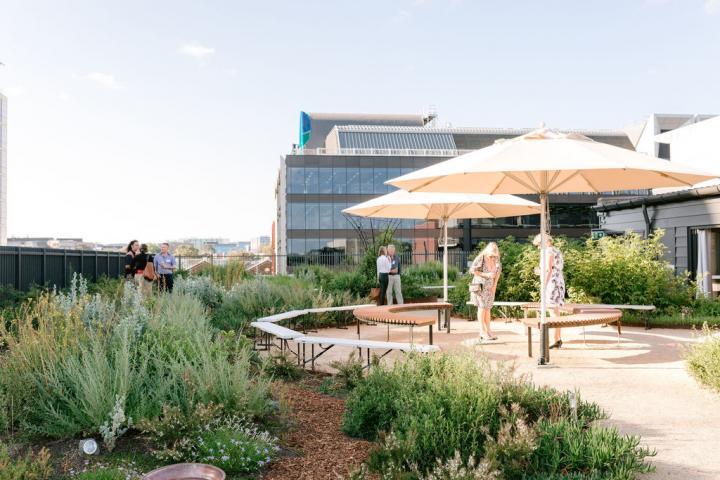Australian roadmap says greening cities can help kickstart economy

Credit: IMAGE: Junglefy
A Roadmap to fast-track flourishing green roofs, walls and facades in Australian cities released today promotes six positive actioned based strategies to help grow green cities.
Researchers collaborating on the project also say the recommendations could provide a COVID-19 stimulus and support recovery.
A Roadmap for green roofs, walls and facades in Australia’s urban landscapes 2020-2030 recommends establishing an industry Knowledge Hub, strong government leadership, policies combining incentives and regulation, and education and advocacy to ensure standards in design, installation and maintenance.
Compiled by the University of Melbourne and the UNSW Sydney with funding from HORT Innovation, it draws on the collective knowledge of over 60 experts in the building and horticultural industries, government agencies and universities.
Roadmap author, University of Melbourne Associate Professor Nick Williams, said while COVID-19 was not part of the core research, learnings from the pandemic illustrate the potential for green roofs, walls and facades on environmental, economic and social benefits, including adapting cities to climate change, bringing nature back to city centres for workers and residents, and importantly, creating jobs.
“The upheaval brought to the way we live and work by the pandemic is an opportunity for developers and building managers to rethink apartment and office building design.
“Rooftop and podium level green roofs, viewed through many building windows but easily accessible from lunch-rooms could help alleviate the high demand for inner city green space seen during the pandemic, and along with good hygiene practices help office workers feel safer in communal areas.”
Co-author Professor Leisa Sargent, Senior Deputy Dean of the UNSW Business School added: “Retrofits of this type could receive a business tax incentive to stimulate the construction industry as they create workplaces that improve employee productivity and wellbeing.
“Green roofs, walls and facades require a diverse mix of professions and trades to build them and many jobs will be created as the sector grows. In Toronto, a 2009 bylaw that made green roofs mandatory on large new buildings is estimated to have created 1600+ jobs in their construction and 25 jobs annually to maintain them.”
Australian cities are lagging behind many of their international counterparts in the implementation of these green infrastructure technologies but researchers point to the City of Melbourne as an example of government that promotes green cities and is tailoring policies to encourage green infrastructure via a planning scheme amendment, through its Green Our City Strategic Action Plan, and recently releasing a tool to measure and improve vegetation cover on new developments, particularly on private land.
“We want Melbourne to remain a place where people want to live and work. This means planning for a city with health and wellbeing of residents and workers front and centre,” City of Melbourne Councillor Cathy Oke said.
“One way that we can do this is through designing in and encouraging more green spaces in our city. The City of Melbourne’s Green Factor Tool will assist developers to increase greening within proposed new buildings, by measuring the quality and quantity of green infrastructure, such as green roofs, walls and gardens.”
Jock Gammon, the managing director of Junglefy, one of Australia’s leading living infrastructure companies and Roadmap contributor agrees.
“We don’t want people to escape the city to enjoy the benefits nature brings. The adoption of living infrastructure helps create thriving, vibrant, healthy spaces where humans and nature intertwine,” Mr Gammon said. “With limited opportunities to include nature in our cities due to urban density, there is a need, now more than ever to breathe life back into our cities.”
###
Media Contact
Lito Vilisoni Wilson
[email protected]
Original Source
https:/




